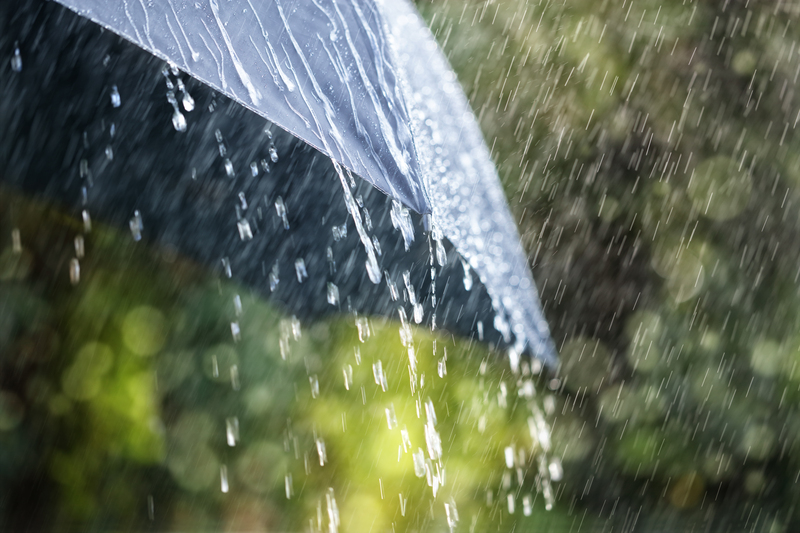Short and Long-Term Freezer Storage Made Easy: The Ultimate Guide
Freezing is one of the simplest and most effective methods of food preservation. Whether you're looking to keep leftovers fresh for a few days or store garden harvests for the winter, understanding how to optimize short and long-term freezer storage is crucial. In this comprehensive guide, learn how to make freezer storage easy, safe, and efficient for any timeframe.

Why Freezer Storage Matters
Proper freezer storage does more than just extend the shelf life of your favorite foods. It helps you avoid food waste, save money, and enjoy nutritious meals all year round. However, not all foods freeze the same way, and different storage periods require distinct approaches. By mastering both short-term and long-term freezer storage techniques, you can take full advantage of your freezer's potential.
- Minimize spoilage and food waste
- Maximize flavor and texture retention
- Cut down on grocery trips
- Enjoy seasonal produce year-round
- Save money by buying in bulk and preserving extras
Understanding Short-Term vs. Long-Term Freezer Storage
Not all freezer storage is the same. For the best results, you need to choose the right method for your timeframe and food type.
- Short-term freezer storage refers to storing foods for a period of a few days to three months. This method is ideal for leftovers, fresh meats, breads, and regularly used fruits and vegetables.
- Long-term freezer storage means keeping food for three months or longer. It is best for bulk proteins, pre-made meals, produce surplus, and foods you want to save for later seasons.
Understanding the differences between these approaches helps you keep foods at their peak without sacrificing taste, texture, or nutrition.
Preparing Foods for Freezing: Best Practices
Proper preparation is crucial to make both short and long-term freezer storage easy and effective. Here's how to get it right:
1. Choose the Right Packaging
- Freezer bags (heavy-duty zip-top bags): Best for most items due to flexibility and airtight sealing.
- Vacuum sealers: Ideal for long-term preservation, removing excess air and preventing freezer burn.
- Plastic or glass containers: Useful for liquids and casseroles; make sure lids are tight and containers are freezer-safe.
- Aluminum foil and freezer paper: Provide extra protection for meats and baked goods.
2. Portioning and Prepping
- Cut, slice, or portion foods into usable sizes before freezing.
- Use small packets for single servings and larger ones for family-style meals.
- Blanch vegetables before freezing to preserve color, flavor, and nutrients.
- Remove excess fat from meats to boost storage life.
- Cool hot foods to room temperature before packing to avoid freezer temperature spikes.
3. Remove Excess Air
- Press air out of freezer bags before sealing.
- Use a straw or vacuum sealer for optimal results.
- Less air equals less freezer burn!
4. Label and Date Everything
- Use permanent markers or freezer-safe labels.
- Include food type, date frozen, and use-by date for easy identification.
Short-Term Freezer Storage Made Easy
Short-term freezer storage is perfect for foods you'll use within a few weeks or months. Here's how to handle common foods:
Best Foods for Short-Term Freezing
- Leftovers: Soups, stews, chili, casseroles (up to 3 months)
- Breads and baked goods: Slice before freezing for convenience (2-3 months)
- Fresh fruits: Berries, mango, and banana slices (up to 3 months; freeze individually on a tray, then bag)
- Vegetables: Blanch first; best for green beans, peas, carrots (2-3 months)
- Fresh meats: Chicken breasts, ground beef, pork chops (1-2 months if not vacuum-sealed)
Tips for Successful Short-Term Freezing
- Freeze in meal-sized servings for easy thawing and reheating.
- Use containers or bags designed specifically for freezer storage.
- Arrange items flat in the freezer for faster freezing and optimal use of space.
- First in, first out: Rotate older items to the front so they're used first.
Long-Term Freezer Storage Made Simple
For items you want to keep for extended periods, from several months to a year or more, strategic long-term storage is key.
Best Foods for Long-Term Freezer Storage
- Bulk meat and fish: Steaks, roasts, whole chickens, fillets (6-12 months; vacuum-sealed can last even longer)
- Prepared meals: Lasagna, cooked grains, pasta sauces (2-4 months, up to 6 with vacuum-sealing)
- Seasonal produce: Corn, beans, rhubarb, berries (8-12 months)
- Nuts and seeds: Walnuts, almonds, flax (up to 1 year)
- Butter and hard cheeses: Freeze in blocks or grated (6-9 months)
Tips for Effective Long-Term Freezing
- Invest in a deep freezer for better temperature stability.
- Always vacuum seal or double-wrap for the best protection.
- Don't overload your freezer; allow space for air circulation.
- Freeze foods quickly to prevent large ice crystals from forming.
- Check recommended storage times regularly--download a simple chart for your fridge or freezer door.
The Science Behind Freezer Burn (And How to Avoid It!)
Freezer burn is the enemy of both short and long-term freezer storage. It occurs when air comes in contact with food, causing dehydration and oxidation of surface layers. While freezer-burned food is safe to eat, the texture and flavor suffer.
- Tip: Always tightly seal foods and use quality packaging designed for freezing.
- Vacuum sealing offers the best protection for long-term storage.
- Use up short-term frozen items first to minimize risk.
- Keep freezer at 0?F (-18?C) or below at all times.
Thawing and Using Frozen Foods Safely
Safe Thawing Methods
How you thaw food is as important as how you freeze it. Use these safe thawing techniques:
- In the refrigerator overnight (best for meats, large items)
- In cold water (change water every 30 minutes; ideal for sealed packages)
- In the microwave (for immediate use only, as some cooking may occur)
Avoiding Safety Risks
- Never thaw food at room temperature, as it allows bacteria to multiply.
- Cook thawed meals within 2 days for best quality (especially meats).
- Do not refreeze previously thawed foods, unless they've been cooked first.
Smart Organization for Easy Freezer Storage
Organization Hacks
- Label everything--make it obvious what's inside each package
- Use baskets or bins to group similar items (meats, veggies, prepared meals)
- Keep a simple freezer inventory list attached to the freezer door to track what you have
- Arrange new items at the back and older ones at the front to reduce waste
- Freeze foods in flat packages for better stacking and faster thawing
How to Pack a Freezer for Maximum Efficiency
- Do not overfill--air needs to circulate for even freezing
- Leave small gaps around packages for cold air movement
- Group foods based on usage--snacks and daily items near the top, bulk or long-term at the bottom
Freezer Storage FAQs
1. Can every food be frozen?
Most foods can be frozen, but some, such as lettuce, cucumbers, or cream-based sauces, do not retain their texture after freezing. Always check if a specific food is suitable for freezer storage.
2. How long can I safely store foods in the freezer?
Most raw meats and poultry last 6-12 months when vacuum-sealed. Cooked meals are best used within 2-6 months. Fruits and vegetables keep well up to a year if properly prepared.
3. What is the best temperature for freezer storage?
Keep your freezer at or below 0?F (-18?C) for safe and effective short and long-term freezer storage.
4. How do I prevent freezer odors?
Use airtight packaging and avoid overloading your freezer. Place a box of baking soda inside to absorb odors.
5. Can I refreeze foods that have thawed?
Only refreeze foods if they were thawed in the refrigerator and have not reached temperatures above 40?F (4?C). For best quality and safety, avoid refreezing raw foods.
Cutting Costs with Freezer Storage
Did you know that using your freezer strategically can slash your grocery bill? Here's how:
- Buy in bulk: Get meats, vegetables, or fruits when they're on sale and portion them for the freezer.
- Avoid takeout: Freeze home-cooked meals and reheat for busy nights.
- Preserve excess: Freeze surplus from your garden or local farmers' market for use throughout the year.

Eco-Friendly and Energy-Saving Freezer Practices
Not only does effective freezer storage save you money and time, but it can also be eco-friendly:
- Freeze local and seasonal foods to reduce your carbon footprint by avoiding out-of-season imports.
- A full freezer is more energy-efficient--just don't overpack. An organized, well-packed freezer keeps its cool better.
- Minimize food wastage by freezing leftovers and foods before their expiration date.
Conclusion: Master Short and Long-Term Freezer Storage
Whether you're preserving the season's harvest, prepping family meals, or saving a special cut of meat for a holiday, making freezer storage easy is all about proper preparation, smart organization, and safe practices. When you apply these expert tips for both short and long-term freezer storage, you'll enjoy better-tasting foods, less waste, and a streamlined kitchen routine.
Ready to maximize your freezer's potential? Start with these guidelines and keep your favorite foods fresh, delicious, and always at your fingertips.



